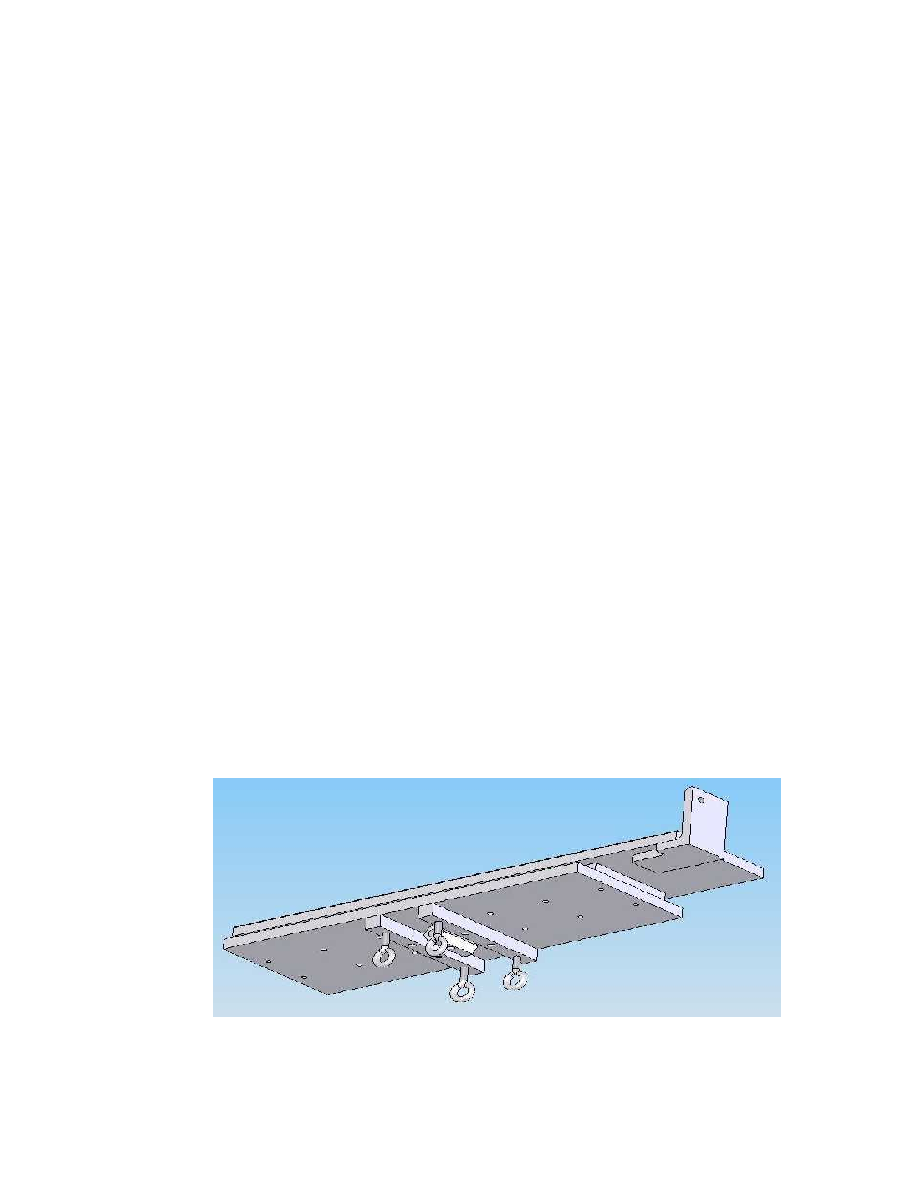
This was taken from the Popular Mechanics magazine article:
"The construction of the bed is somewhat of a novelty, although it has been thoroughly tried out
by the writer in this and other machines, and found to be very satisfactory. This method of
making the bed eliminates the hardest work of making a small lathe, as it does away with the bed
casting and the necessary machining. A piece of ½ by 4-in. cold-rolled steel, 30 in. long, is used
for the shears. This is first drilled and tapped for a number of 3/16-in. stove bolts, of varying
lengths, which are used to anchor the shears to the cement, also drilled and countersunk for the
leg screws and for the ½-in. headstock bolts. It is next carefully straightened and scraped to a
true surface on top and sides, testing the width throughout with a micrometer, and using a knife-
edge straightedge on the surfaces; these must be as true and straight as it is possible to make
them, as upon their truth depends the accuracy of the lathe. When trued, all surfaces should
either be frosted or polished.
The shear anchor bolts should now be screwed home, the pipes, leg and rear leadscrew-bearing
bolts placed in position, and a wooden form made to fit closely around shears and legs, in which
to pour the cement. The cement used is a mixture of one part Portland cement to three parts
clean, sharp sand, mixed with just enough water to enable a handful of the mixture to be picked
up and squeezed and to leave the impression of the fingers in it. This cement is tamped down
firmly in the form, poking it around the screws and into the corners with an ice pick, or some
similar tool. When the concrete has set thoroughly, the boards are removed and the cement
thoroughly wetted twice a day for about a week; this will temper the cement, and is a very
important part of the work. The resulting bed is as strong as anyone could wish. Reinforcing rods
may be laid down in the cement, as it is being placed, or wires twisted throughout the bolts,
adding further to the strength of the bed.
The main member of the carriage is made of cold-rolled steel, ½ by 5 by 5 ¼ in. in size,
machined as shown in the carriage-detail drawing. A piece of ¼ by 2-in. cold-rolled steel, 7 in.
long, is fastened to the top of the main member by 3/16-in. screws; on this piece the cross slide
runs. The cross slide is also made of steel, machined as shown, and is fitted with a turret tool
post. The cross slide is held to its ways by means of angle pieces, as shown in the front view of
the carriage." Your machine will use different dimensions but this is a good explanation of
cement and steel construction.
46

